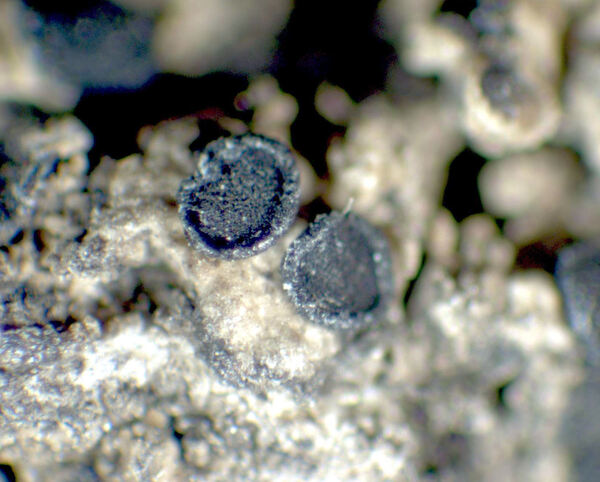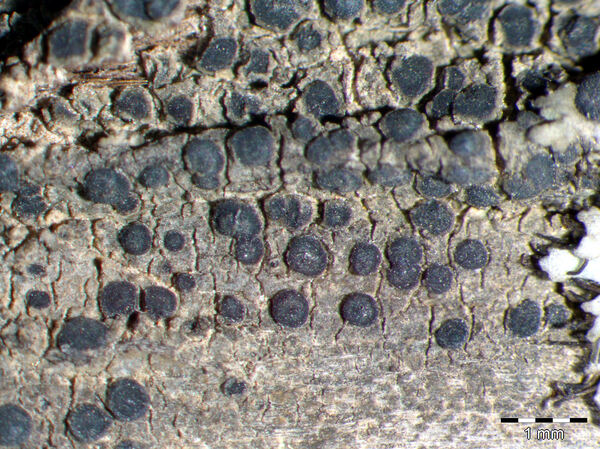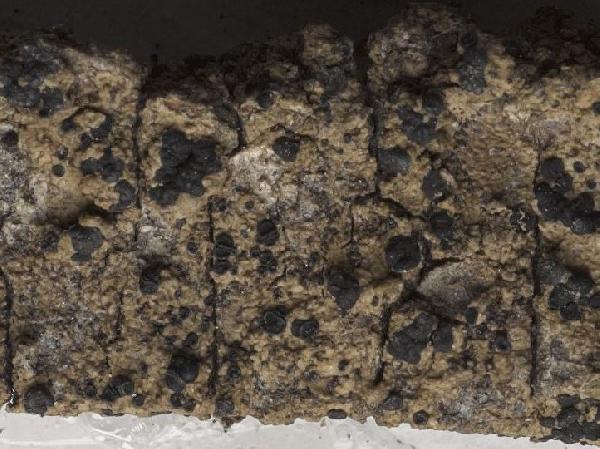Endohyalina kalbii (Giralt & Matzer) Giralt, van den Boom & Elix
Mycol. Prog., 9: 45, 2010. Basionym: Rinodina kalbii Giralt & Matzer - Lichenologist, 26: 328, 1994.
Synonyms:
Distribution: C - Sar (Giralt & Matzer 1994, Rambold & al. 1994).
Description: Thallus crustose, episubstratic, continuous, smooth, brownish to ochre-coloured. Apothecia lecideine, adnate to sessile, up to 1 mm across, with a concave to slightly convex, black disc and a thick, persistent proper margin. Proper exciple 40-50(-70) μm wide laterally, Aethalea-type, the inner hyphae hyaline, prosoplectenchymatous, the outer hyphae parallel and usually strongly brown-pigmented, with crystals visible under polarized light, which react K+ yellow; epithecium brown, K-, N-; hymenium colourless, 60-80 μm high, not inspersed with oil droplets; paraphyses capitate, the apical cells up to 6 µm wide, with a brown cap; hypothecium pale to dark reddish brown. Asci 8-spored, clavate to cylindrical-clavate, the apical dome K/I+ dark blue with a pale, conical-pointed apical cushion (axial mass), the wall I-, but the thin outer gel I+ blue, Bacidia-type. Ascospores 1-septate, brown with paler spore-ends, ellipsoid, (11-)12-16 x (5-)6-8 μm, Dirinaria-type, the lumina angular when young, becoming rounded when mature (Pachysporaria-type), the wall smooth to microrugulate, the torus not or poorly developed, with ontogeny of type B (apical inner wall-thickenings produced before septum formation). Pycnidia black. Conidia bacilliform, 5-6 x c. 1 μm. Spot tests: thallus K-, C-, KC-, P-; proper exciple K+ yellow. Chemistry; proper exciple with secalonic acid A (major), and an unknown secalonic acid (trace).Note: a Mediterranean-Atlantic species, restricted to coastal localities with frequent humid, salt-laden winds, e.g. on Juniperus on sand dunes. It is included as “Critically Endangered” in the Italian red list of epiphytic lichens (Nascimbene & al. 2013c).
Growth form: Crustose
Substrata: bark
Photobiont: green algae other than Trentepohlia
Reproductive strategy: mainly sexual
Most common in areas with a humid-warm climate (e.g. most of Tyrrenian Italy)
Taxon bound to maritime-coastal situations
Commonnes-rarity: (info)
Alpine belt: absent
Subalpine belt: absent
Oromediterranean belt: absent
Montane belt: absent
Submediterranean belt: absent
Padanian area: absent
Humid submediterranean belt: absent
Humid mediterranean belt: extremely rare
Dry mediterranean belt: absent

Predictive model
Herbarium samples
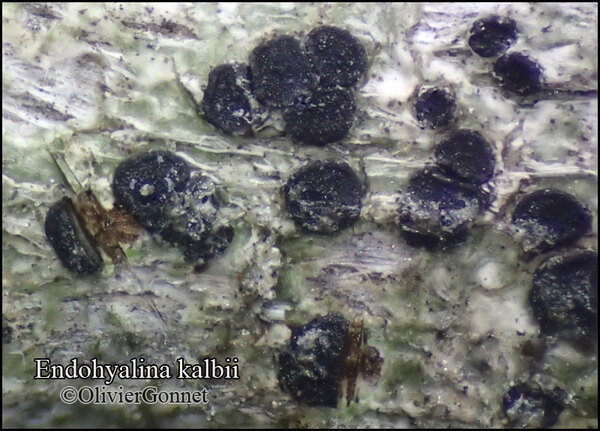
Courtesy Danièle et Olivier Gonnet - Source: https://www.afl-lichenologie.fr/Photos_AFL/Photos_AFL_E/Texte_E/Endohyalina_kalbiii.htm
France, oct. 2015 - sur Juniperus phoenicea (Anse de l'Ile de Fazzi) - Corse
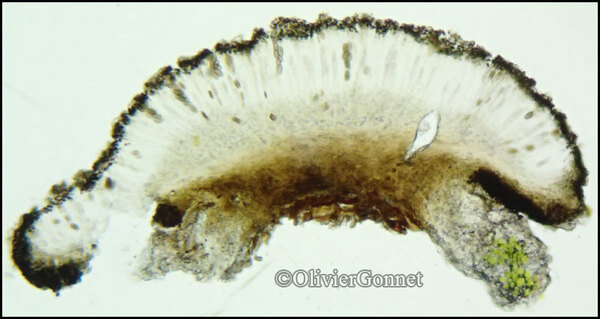
Courtesy Danièle et Olivier Gonnet - Source: https://www.afl-lichenologie.fr/Photos_AFL/Photos_AFL_E/Texte_E/Endohyalina_kalbiii.htm
France, oct. 2015 - sur Juniperus phoenicea (Anse de l'Ile de Fazzi) - Corse

Courtesy Danièle et Olivier Gonnet - Source: https://www.afl-lichenologie.fr/Photos_AFL/Photos_AFL_E/Texte_E/Endohyalina_kalbiii.htm
France, oct. 2015 - sur Juniperus phoenicea (Anse de l'Ile de Fazzi) - Corse
Growth form: Crustose
Substrata: bark
Photobiont: green algae other than Trentepohlia
Reproductive strategy: mainly sexual
Most common in areas with a humid-warm climate (e.g. most of Tyrrenian Italy)
Taxon bound to maritime-coastal situations
Commonnes-rarity: (info)
Alpine belt: absent
Subalpine belt: absent
Oromediterranean belt: absent
Montane belt: absent
Submediterranean belt: absent
Padanian area: absent
Humid submediterranean belt: absent
Humid mediterranean belt: extremely rare
Dry mediterranean belt: absent

Predictive model
| Herbarium samples |

Courtesy Danièle et Olivier Gonnet - Source: https://www.afl-lichenologie.fr/Photos_AFL/Photos_AFL_E/Texte_E/Endohyalina_kalbiii.htm
France, oct. 2015 - sur Juniperus phoenicea (Anse de l'Ile de Fazzi) - Corse

Courtesy Danièle et Olivier Gonnet - Source: https://www.afl-lichenologie.fr/Photos_AFL/Photos_AFL_E/Texte_E/Endohyalina_kalbiii.htm
France, oct. 2015 - sur Juniperus phoenicea (Anse de l'Ile de Fazzi) - Corse

 Index Fungorum
Index Fungorum
 GBIF
GBIF
